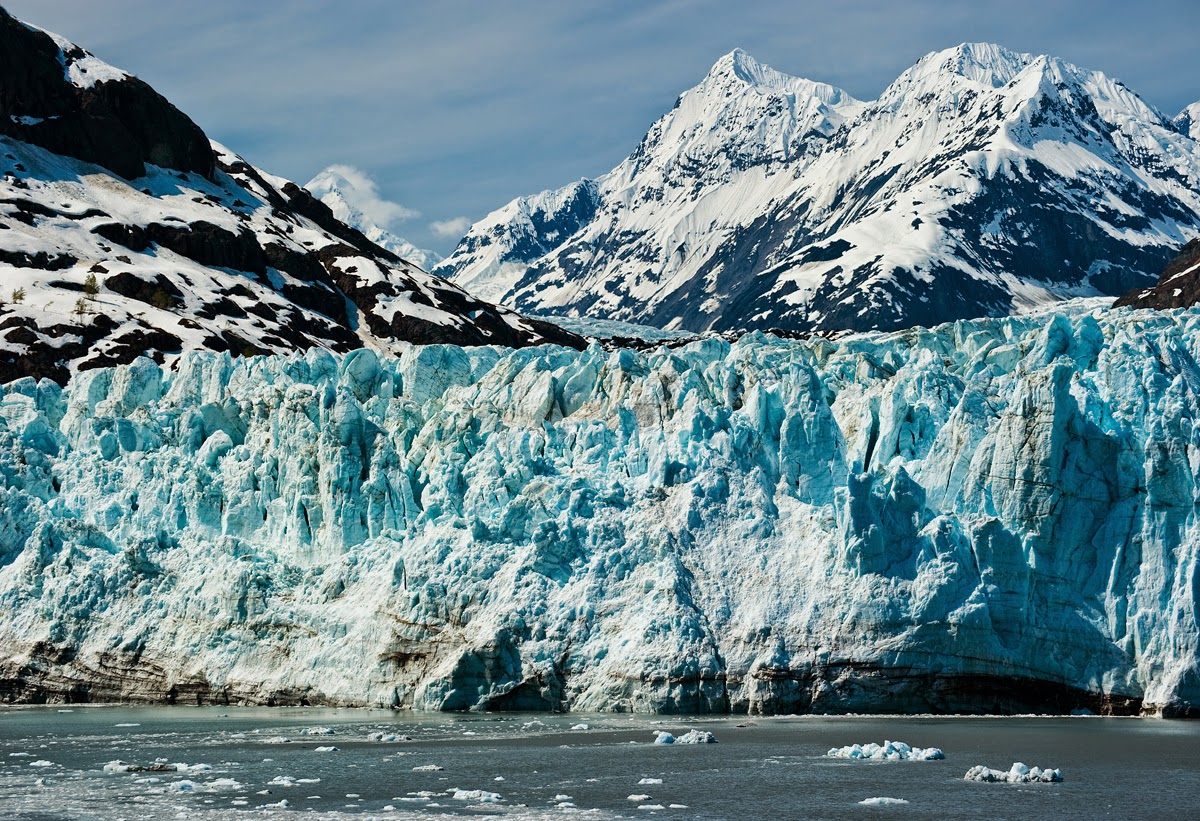Ketchikan
is the southernmost city in Alaska, 700 miles north of Seattle. Like all Alaskan coastal towns, it was originally a Native fishing village. Fishing is still a major industry and the town promotes itself as the "Salmon Capital of the World." And since the cruise ships stop here, tourism is the significant source of revenue from May to September.
The southern part of town serves the tourist trade, with rather high-end stores and shops right next to the new cruise ship docks. The more typical tourist schlock is available a few streets away on Creek Street; once a brothel district. It was said that both salmon and fishermen came to Ketchikan to spawn.
Ketchikan is billed as the totem capital of Alaska, but most are located away from the downtown area in the Saxman Totem Park, Totem Bight State Park, Potlatch Park, and the Totem Heritage Center. I did find a few, located in and near a beautiful little park.
Back on the ship, Barb and I sat and watched preparations for sailing. Departure time was 11:45 and at 12:20 there were still dawdlers wandering down the wharf. A final couple wandered up and the security guy got in their face and urged them repeatedly to hurry and board, so naturally, they stopped to take pictures! Evidently this couple told security that there were other passengers in a restaurant across the street, because two officers trotted over there to check, but returned empty-handed.
They got the gangways pulled away, and the gangway doors closed, and the ship was underway. It can move sideways, by the way. Then we saw one last couple wandering down the wharf. A Port of Ketchikan official who had been present for the departure met them, and you could see them looking at their watches and at the ship - the departing ship - and I'm pretty sure they were a bit excited at that point. We wondered what the airfare is from Ketchikan, Alaska to Victoria, British Columbia.
We were talking to a young Ukrainian girl, one of the waitstaff, and she said passengers get left on a regular basis (we found out later that 6 were left in Ketchikan). The ship waits for no one. She said sometimes crew members miss the departure; in that case they have to figure out how to survive until the following week, when the boat comes back. And then they have a lot of 'splaining to do.
Next port: Victoria, British Columbia
The southern part of town serves the tourist trade, with rather high-end stores and shops right next to the new cruise ship docks. The more typical tourist schlock is available a few streets away on Creek Street; once a brothel district. It was said that both salmon and fishermen came to Ketchikan to spawn.
This one was so tall, I had to take two pictures.
I thought the flowers in the park were more interesting than the totems, though.Back on the ship, Barb and I sat and watched preparations for sailing. Departure time was 11:45 and at 12:20 there were still dawdlers wandering down the wharf. A final couple wandered up and the security guy got in their face and urged them repeatedly to hurry and board, so naturally, they stopped to take pictures! Evidently this couple told security that there were other passengers in a restaurant across the street, because two officers trotted over there to check, but returned empty-handed.
They got the gangways pulled away, and the gangway doors closed, and the ship was underway. It can move sideways, by the way. Then we saw one last couple wandering down the wharf. A Port of Ketchikan official who had been present for the departure met them, and you could see them looking at their watches and at the ship - the departing ship - and I'm pretty sure they were a bit excited at that point. We wondered what the airfare is from Ketchikan, Alaska to Victoria, British Columbia.
We were talking to a young Ukrainian girl, one of the waitstaff, and she said passengers get left on a regular basis (we found out later that 6 were left in Ketchikan). The ship waits for no one. She said sometimes crew members miss the departure; in that case they have to figure out how to survive until the following week, when the boat comes back. And then they have a lot of 'splaining to do.
Next port: Victoria, British Columbia














.jpg)











.jpg)







